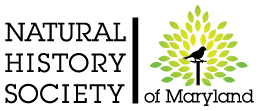The most famous asteroid has to be the Chicxulub Event. Remember? 65 million years ago an asteroid roughly 6 to 9 miles in diameter hit Earth in what is now Mexico, killing 70% of all species on Earth, including the dinosaurs. Although immense impactors like the one that devastated the entire planet 65 million years ago are rare, Near Earth Objects (NEO) of many different sizes can pose serious threats.
In this talk, Dr. Sethanne Howard will define asteroids, explain where they live in our Solar System, and describe what happens when they impact the Earth. She will also discuss the pieces of asteroid extracted in situ and returned to Earth by a science mission. What do they tell us? And can science fiction be made real? Can we avoid a big asteroid hit?
Sethanne Howard is the first woman to receive a degree in physics from the University of California, Davis. She received a Master’s Degree in nuclear physics from Rensselaer Polytechnic Institute and a PhD in astrophysics from Georgia State University. Between her bachelor’s degree and PhD she worked for many years in various scientific fields and taught high school physics and university astronomy. She also worked for a US Naval facility as an oceanographer and meteorologist. She worked with x-ray satellites at Los Alamos National Laboratory where she received two awards for education outreach. At NASA Headquarters she managed several operating NASA astrophysics satellites and mission programs and created the initial web pages for NASA’s Office of Space Science. Before coming to the US Naval Observatory (USNO) in October 2000, she spent three years at the National Science Foundation as the Program Manager for Extragalactic Astronomy and Cosmology and also Executive Secretary for the international Gemini Telescopes Project.
She is now retired. Her hobby is the history of women in science and technology, and she maintains a web site dedicated to this effort: http://4kyws.ua.edu.The web pages are now an integrated part of many school and textbook curricula. Her book on the history of women in science was just published: The Hidden Giants.

